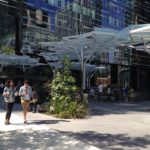Seattle Planning Commission Releases “Neighborhoods for All” Report
Planning Commission: Creating ‘Neighborhoods for All’ Changes to single-family zoning necessary for the city’s future, report concludes Restoring the flexibility in housing types seen in Seattle’s historic residential neighborhoods is critical if the city is to achieve its goals of being a diverse, equitable and sustainable place to live, according… [ Keep reading ]
